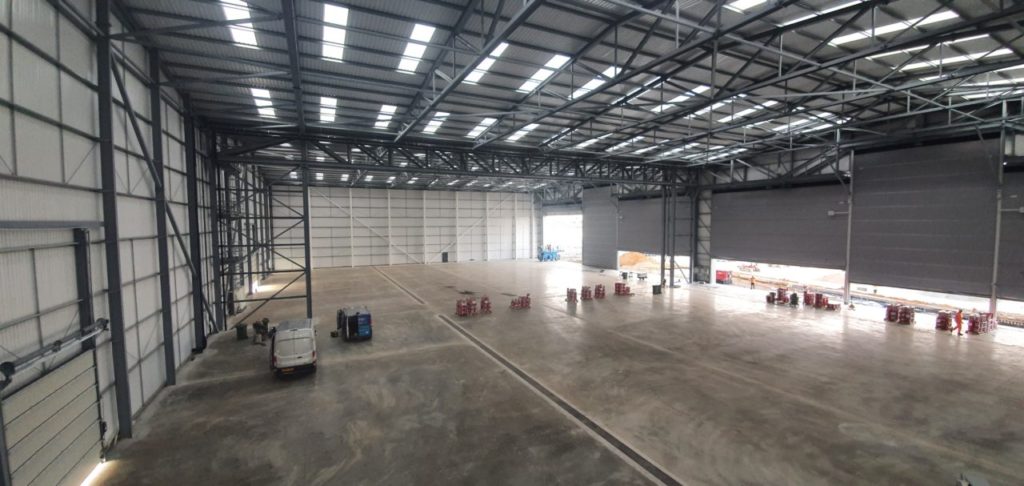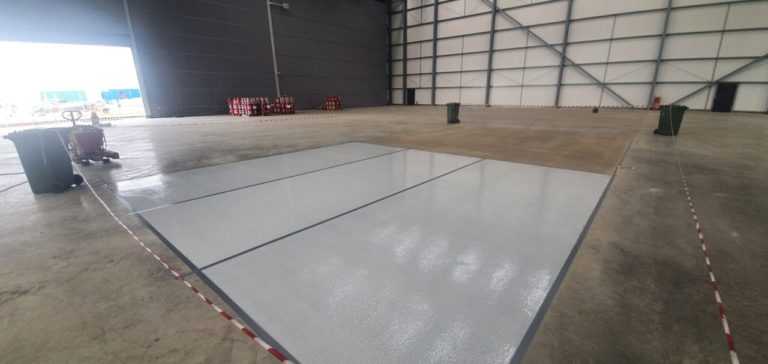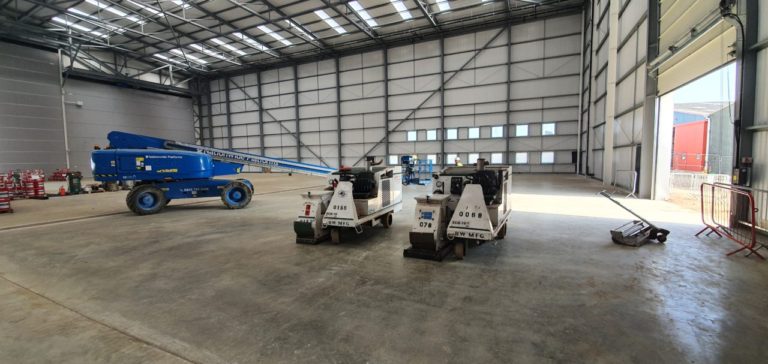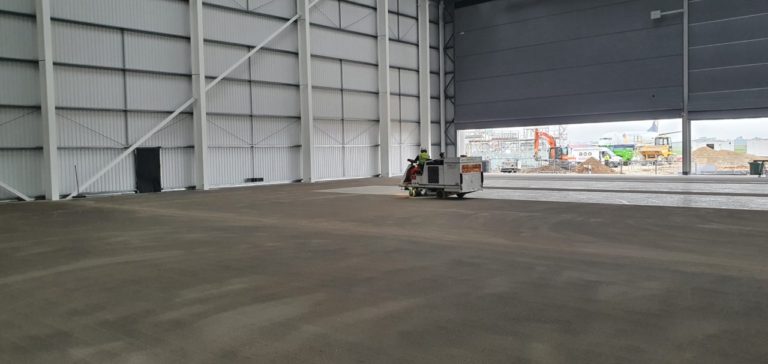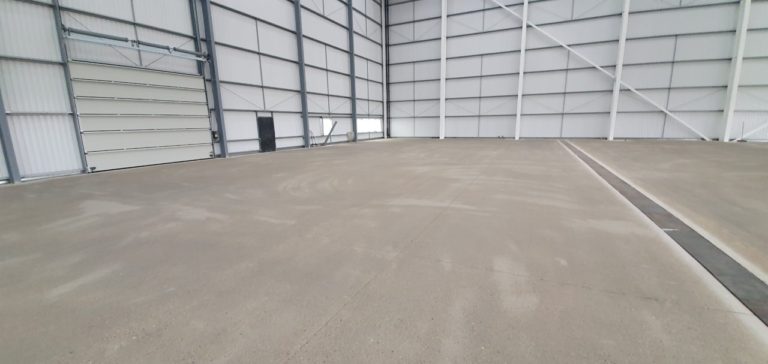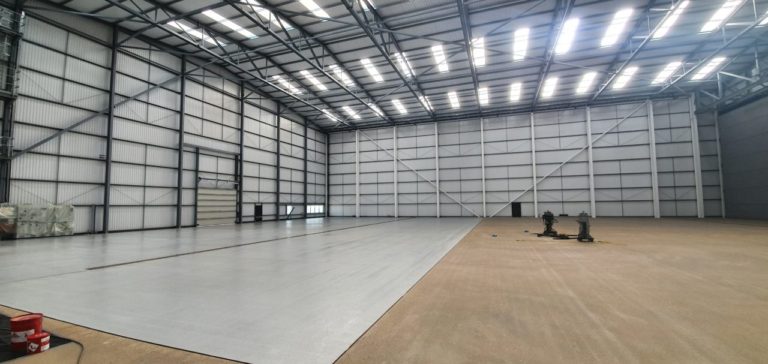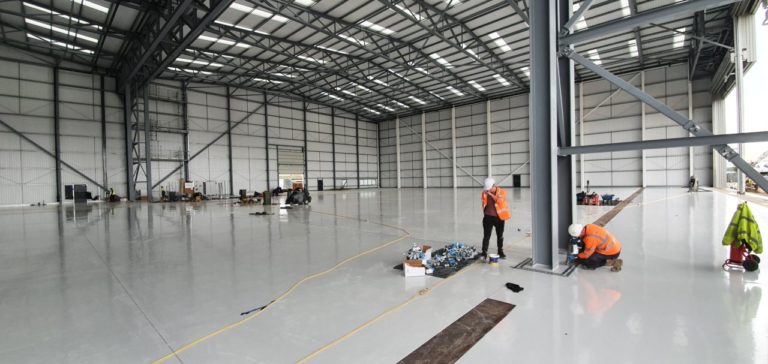THE PROBLEM
The new aircraft hangar floor required a chemical resistant and durable resin floor.
SOLUTION
We proposed the application of a crack bridging, yet chemically resistant resin floor in the form of Remmers Epoxy WHG.
Initially to ensure excellent adhesion of the new resin floor to the power floated concrete slab, surface laitance was removed and the concrete profiled by method of captive shot blasting using ride on units. Unfortunately upon commencing the preparation works we found that the concrete slab was in areas releasing poorly bound aggregates from the slab. Rather than proceeding we paused the preparation works and installed sample panels to ensure that the proposed specification would still meet the clients expectations.
Applying a liquid moisture barrier
Due to the moisture content of the concrete it was necessary to apply a liquid moisture barrier (DPM). This was applied in the form of Remmers Epoxy MT100, applied in two coats. Failure to properly seal the concrete when the moisture content is high as is common on new slabs can lead to osmotic blistering. When applying a liquid dpm we always believe that it is preferable to apply this in two coats, as a pin hole can be a point of failure for osmosis to occur.
Following priming Remmers Epoxy WHG was applied in two coats by method of squeegee and roller. As well as offering the necessary skydrol resistance, this material can crack bridge to 0.2mm, a common crack design width for concrete.
Because of the size of the floor, the application was broken down into areas in order to fully respect the overcoating windows for each respective material. Due to a delayed start on site as the works progressed the temperatures dropped and the humidity increased. Due to incorrect climatic conditions for resin flooring application now being present it was necessary to introduce indirect oil fired heating.
Applying the epoxy resin floor
When applying epoxy resin flooring high humidity can have the following negative effects;
- High humidity or condensation during curing can result in amine blush or ‘blooming’ where the moisture reacts with the amine curing agent, creating a reduction in gloss or even a matt finish
- If the surface temperature is less than 3 degrees above the dew point, there is a risk that there will be a film of moisture on the surface which will prevent proper adhesion of the resin flooring
- For some epoxy resin flooring materials (particularly water dilutable or ‘water based’ epoxy coating) the incorrect temperature can prevent them curing entirely
Following the completion of all coating applications, the expansion joints were recut using a vacuum controlled floor saw. These were then sealed using a flexible jointing compound in the form of Remmers Multi Sil NUW applied using mastic guns.

